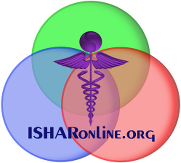OBSERVATIONAL MEDITATION PRACTICE
“CAN LONG-TERM TRAINING IN HIGHLY FOCUSED FORMS OF OBSERVATION POTENTIALLY INFLUENCE PERFORMANCE IN TERMS OF THE OBSERVER MODEL IN PHYSICS? CONSIDERATION OF ADEPTS OF OBSERVATIONAL MEDITATION PRACTICE”
ABSTRACT FOR PAPER ON ISSUES INVOLVED IN THE OBSERVER MODEL OF PHYSICS
FOUNDATION OF MIND CONFERENCE MAY 2016
UC BERKELEY
William C Bushell, PhD
Biophysical Anthropology, MIT
Director of Research & Academic Liaison, ISHAR (isharonline.org)
March 31, 2016
This paper presents developments in a published yet still little known model of how intensively trained individuals – adepts or virtuosi of special meditational techniques – appear to be potentially capable of radically enhancing their sensory perceptual capacities to the point of, for example, directly perceiving light at the scale of single photons, at the quantum mechanical limit of its detectability (Bushell 2009, Annals of the NY Academy of Sciences, 1172: 348f; Bushell 2011, Towards a Science of Consciousness, Stockholm, Sweden, 120, 252; Bushell et al in preparation). This is a working model which is based also on little-known work of leading physicists and biophysicists from Princeton, Stanford, Berkeley and other institutions. Along with the enhanced perception of light, the working model presents evidence, based on established findings in neuroscience, for other forms of significantly, even radically, enhanced perceptual abilities: the ability to perceive on the spatial scale of a fraction of the diameter of a human photoreceptor cell, or within millionths of a meter (“hyperacuity”); the demonstrated ability to overcome “normal” limitations in experimental tests of change blindness; and others. The model hinges on a number of key principles established in neuroscience: the phenomenon of neuroplasticity, which, in sensory-perceptual or observational terms, results from exposure to sets of visual stimuli, as well as to deliberate practice of observation; the of course closely related phenomenon of “perceptual learning,” which can lead, through practice-induced neuroplastic changes, to perception in the realm of hyperacuity; and the schema of “expert and exceptional performance,” which is a form of rigorous science devoted to investigating the superior performance of a range of leading experts (from chess grandmasters to virtuoso musicians, as well as to savants), which was originally developed by the Nobel Prize-winning cofounder of the fields of cognitive psychology and AI, Herbert A Simon. The model winds up providing support for claims of some meditation traditions (in Tibet, India, elsewhere) that highly advanced long-term practitioners become enabled through intensive and extensive practice to directly perceive the world at the “limits of phenomena,” ie at fundamental levels of matter and energy. This is an alien concept in the West (except perhaps within the realm of “parapsychology,” which will not be discussed in this paper), as is the concomitant concept that these intensive and extensive practices may lead, through the “mechanisms” elucidated, to the radical transformation of the human sensorium into a kind of “soft tissue high tech” system with previously unsuspected capacities which resemble those found in modern technology. The potential capacity to observe fractal self-similarity on microscopic and macroscopic scales will also be discussed in this framework.
